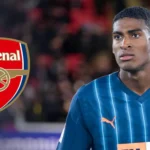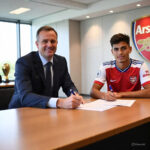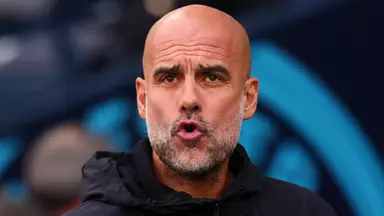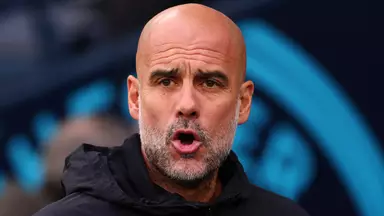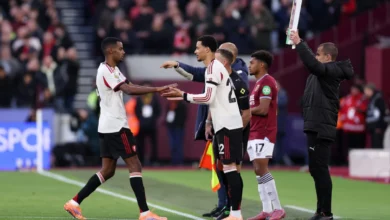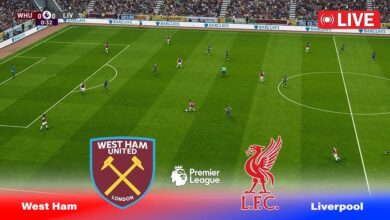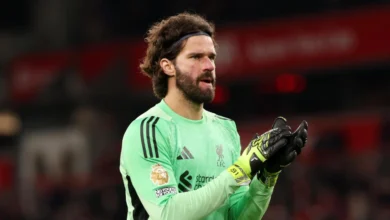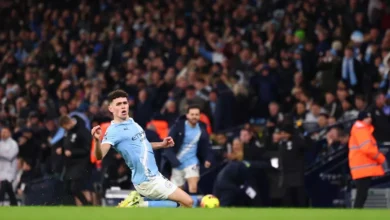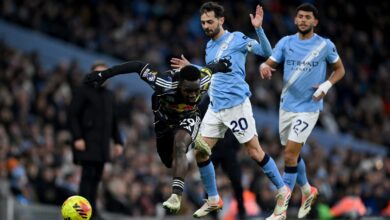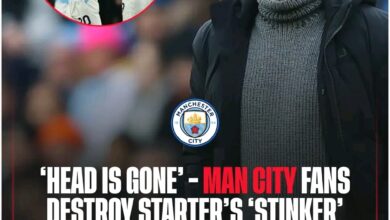Arsenal’s Summer Transfer Window: A Comprehensive Analysis of the Gunners’ Fourth Signing and Strategic Rebuild
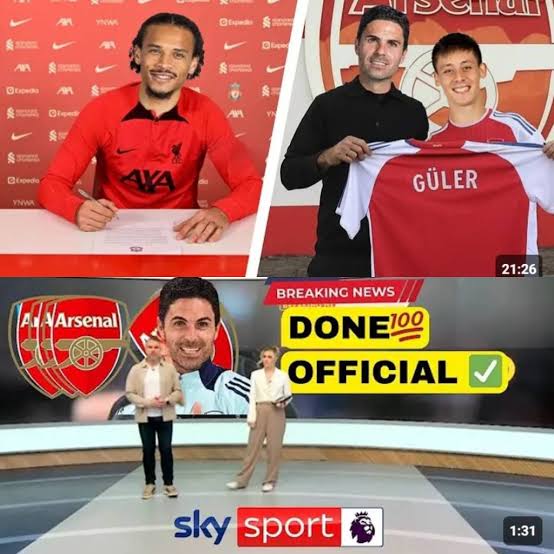
Arsenal Football Club finds itself at a pivotal juncture in the summer of 2025, with manager Mikel Arteta orchestrating what appears to be one of the most comprehensive squad overhauls in recent memory. After another season that promised much but ultimately delivered heartbreak, the Gunners are moving decisively in the transfer market to address the gaps that prevented them from achieving their ultimate objectives. The North London club’s pursuit of Valencia’s young defensive sensation Cristhian Mosquera represents not just another signing, but a calculated move that encapsulates Arsenal’s broader strategic vision for the future.
The significance of this potential fourth summer signing cannot be understated in the context of Arsenal’s recent trajectory. Having finished as runners-up in the Premier League behind Liverpool and reaching the Champions League semi-finals before falling to eventual winners Paris Saint-Germain, the club demonstrated its capability to compete at the highest level while simultaneously highlighting the fine margins that separate good from great in modern football. It is within this framework that Arteta’s summer recruitment strategy must be understood – not as wholesale changes, but as precision additions designed to elevate an already competitive squad to championship-winning levels.
Cristhian Mosquera’s emergence as Arsenal’s primary defensive target represents a fascinating blend of immediate utility and long-term investment. At just 19 years of age, the Spanish youth international has already accumulated an impressive 90 senior appearances for Valencia since making his debut in 2022, a testament to both his precocious talent and the trust placed in him by one of La Liga’s most respected academies. This experience at such a young age positions Mosquera as an ideal candidate for Arsenal’s philosophy of developing young talent while maintaining competitive standards.
The financial dynamics surrounding Mosquera’s potential transfer reveal the modern realities of player acquisition in Europe’s top leagues. Arsenal’s initial approach with a bid of approximately £12 million demonstrated their genuine interest while simultaneously testing Valencia’s resolve. The Spanish club’s rejection and counter-demand for closer to £24 million reflects not only Mosquera’s perceived value but also Valencia’s strategic position as a selling club that must maximize revenue from their most promising assets. This negotiation dance is emblematic of the broader transfer market, where clubs must balance financial prudence with sporting ambition.
From a tactical perspective, Mosquera’s potential arrival addresses several key areas of concern for Arteta. The young defender’s versatility across the defensive line provides options that extend beyond simple squad depth. His ability to play both as a central defender and in wider defensive positions offers Arteta tactical flexibility that could prove crucial during the demanding periods of a multi-competition campaign. Moreover, his left-footed profile adds a different dimension to Arsenal’s defensive options, potentially allowing for more varied build-up play and progressive passing from deep positions.
The timing of Mosquera’s potential arrival also coincides with broader questions about Arsenal’s defensive future. While William Saliba and Gabriel Magalhães have formed a formidable partnership at the heart of Arsenal’s defense, the persistent speculation linking Saliba with Real Madrid creates an atmosphere of uncertainty that prudent planning must address. Mosquera’s acquisition could serve as both insurance against potential departures and genuine competition for places, driving standards higher across the defensive unit.
Arsenal’s summer transfer activity extends far beyond the pursuit of Mosquera, revealing a comprehensive strategy designed to address multiple areas of the squad simultaneously. The pending £55 million acquisition of Real Sociedad midfielder Martin Zubimendi represents perhaps the most significant statement of intent, bringing a player who combines technical excellence with Premier League-ready physicality and tactical intelligence. Zubimendi’s profile as a deep-lying playmaker who can also contribute defensively addresses Arsenal’s need for midfield versatility and control.
The strategic timing of the Zubimendi deal, delayed until July at Real Sociedad’s request, demonstrates Arsenal’s willingness to accommodate seller preferences when securing priority targets. This flexibility in negotiations often proves crucial in complex transfers involving established players moving between major European clubs. The fee itself, while substantial, reflects the premium attached to proven La Liga talent and Arsenal’s commitment to competing for the highest-level players.
Goalkeeper Kepa Arrizabalaga’s acquisition from Chelsea for £5 million represents a different category of strategic thinking. The Spanish international brings Premier League experience and proven capability at the highest level, providing both immediate competition for Aaron Ramsdale and experienced cover for European competitions. The relatively modest fee reflects both Kepa’s desire to secure regular playing time and Chelsea’s willingness to facilitate his departure, creating an opportunity that Arsenal have moved quickly to exploit.
The addition of Brentford captain Christian Nørgaard adds another dimension to Arsenal’s midfield options. At 31 years of age, Nørgaard brings leadership qualities and Premier League experience that could prove invaluable during crucial moments of the season. His scheduled medical at the Emirates Stadium indicates how advanced this particular deal has become, suggesting that Arsenal’s recruitment team has been working on multiple fronts simultaneously to secure their targets.
The potential arrival of Mosquera must be viewed within the context of Arsenal’s evolving defensive structure and the broader implications for squad composition. The current defensive partnership of Saliba and Gabriel has provided stability and reliability, but the demands of modern football require depth and tactical flexibility that extend beyond a simple first-choice pairing. Mosquera’s integration into this system could facilitate tactical variations that enhance Arsenal’s strategic options.
Gabriel’s recent commitment to a new long-term contract provides stability and continuity, anchoring one side of the defensive partnership while allowing for evolution in other areas. His partnership with Saliba has been characterized by complementary skills – Gabriel’s physicality and aerial dominance combining effectively with Saliba’s pace and ball-playing ability. Mosquera’s addition to this mix could create a three-way competition that drives standards higher while providing tactical alternatives.
The ongoing speculation regarding Saliba’s future, particularly the persistent interest from Real Madrid, adds complexity to Arsenal’s defensive planning. While the French international remains committed to Arsenal’s project, the realities of modern football mean that sustained excellence often attracts attention from Europe’s traditional powerhouses. Mosquera’s development could provide Arsenal with both immediate competition for places and long-term security should circumstances change.
The potential departure of Jakub Kiwior to AC Milan represents the natural consequence of increased competition for places. The Polish international’s time at Arsenal has been characterized by limited opportunities, and the addition of Mosquera could further restrict his pathway to regular first-team football. This movement of players reflects healthy squad evolution, where quality additions naturally create space for those seeking more regular playing time elsewhere.
Arsenal’s approach to outgoing transfers reveals a strategic understanding of squad balance and financial sustainability. The openness to offers for Oleksandr Zinchenko suggests recognition that the Ukrainian’s role may have evolved beyond his initial importance to the squad. Zinchenko’s unique profile as an inverted full-back who could operate in midfield provided tactical flexibility during his early period at Arsenal, but tactical evolution and new signings may have reduced his centrality to Arteta’s plans.
Kieran Tierney’s return to Celtic after six years represents the end of a significant chapter in both the player’s career and Arsenal’s defensive evolution. The Scottish international’s pace and attacking threat from left-back made him a valuable asset during his peak periods, but persistent injury concerns and tactical changes limited his impact in recent seasons. His departure creates space for new additions while potentially reducing the wage bill and generating transfer revenue.
These departures must be understood as part of Arsenal’s broader squad optimization strategy. Modern football squads require careful balance between experienced leaders, peak-age performers, and developing talents. The movement of players who no longer fit the tactical system or whose development has stagnated creates opportunities for new acquisitions while maintaining financial sustainability.
Arteta’s tactical system has evolved significantly since his appointment, incorporating lessons learned from both successful and disappointing campaigns. The potential addition of Mosquera and the other summer signings suggests further tactical evolution designed to address specific weaknesses identified during the previous season’s campaigns. The emphasis on defensive depth and midfield versatility indicates preparation for the physical and mental demands of competing across multiple competitions.
The integration of new signings into Arsenal’s established tactical framework requires careful planning and gradual implementation. Mosquera’s familiarity with Spanish football culture, having progressed through Valencia’s system, could facilitate his adaptation to Premier League demands while bringing fresh perspectives to defensive organization and build-up play. His experience at such a young age suggests maturity beyond his years, potentially accelerating his integration process.
The tactical flexibility provided by multiple quality options in each position allows for strategic rotation and tactical adjustments based on opposition strengths and weaknesses. This depth becomes particularly crucial during congested fixture periods and the latter stages of cup competitions, where squad freshness can prove decisive. Arsenal’s recent experiences in European competition have highlighted the importance of maintaining competitive intensity across multiple fronts.
Arsenal’s summer spending reflects a carefully calibrated approach to financial sustainability within UEFA’s Financial Fair Play regulations. The combination of significant investments in proven talent like Zubimendi with strategic value acquisitions like Kepa demonstrates sophisticated financial planning that maximizes sporting impact while maintaining regulatory compliance. The phased nature of these acquisitions, with some deals delayed until July, also suggests careful cash flow management.
The relatively modest outlay for Mosquera, even at Valencia’s asking price of £24 million, represents excellent value for a player of his age and potential. Defensive players often provide longer-term value due to career longevity and tactical importance, making such investments particularly strategic from both sporting and financial perspectives. The potential for future appreciation in Mosquera’s value adds an investment dimension to the sporting benefits.
Revenue generation through player sales, such as the potential departures of Zinchenko and Kiwior, helps offset new acquisition costs while maintaining squad balance. This approach to squad management, where incoming and outgoing transfers are coordinated to optimize both sporting and financial outcomes, reflects mature institutional planning that extends beyond immediate tactical needs.
Arsenal’s summer transfer strategy must be understood within the context of their dual ambitions in domestic and European competitions. The previous season’s Champions League semi-final appearance demonstrated the club’s capability to compete at Europe’s highest level while highlighting areas requiring strengthening to progress further. The additions of experienced players like Zubimendi and Kepa provide European pedigree that could prove crucial in high-pressure situations.
The domestic disappointment of finishing second to Liverpool in the Premier League, despite an impressive campaign, provides additional motivation for strategic enhancement. The fine margins that separate championship success from near-misses often come down to squad depth and tactical flexibility during crucial periods of the season. Arsenal’s summer acquisitions appear designed to address precisely these factors.
The psychological impact of near-misses in both domestic and European competitions cannot be understated. The addition of proven winners and experienced campaigners helps create a mentality that expects success rather than hopes for it. This cultural shift, combined with tactical and personnel improvements, positions Arsenal for a serious championship challenge in the coming season.
Mosquera’s potential acquisition exemplifies Arsenal’s commitment to combining immediate impact with long-term development. At 19 years of age, he represents the ideal profile for a club that has historically excelled at developing young talent into world-class performers. His integration into Arsenal’s system could follow the successful template established by players like Saliba, who arrived young and developed into crucial first-team players.
The balance between investing in youth and acquiring experienced players reflects sophisticated squad planning that considers both immediate needs and future sustainability. Young players like Mosquera provide long-term value through development potential and future transfer value, while experienced additions like Nørgaard offer immediate leadership and tactical understanding
Arsenal’s academy continues to produce promising talents, but the pathway to first-team football has become increasingly competitive as the club’s ambitions have grown. Strategic acquisitions of young players like Mosquera provide examples and competition that can accelerate the development of homegrown talents while ensuring competitive standards are maintained.
Arsenal’s summer transfer window, with Mosquera potentially becoming the fourth significant acquisition, represents more than simple squad enhancement. It demonstrates strategic thinking that addresses immediate tactical needs while building foundations for sustained success. The combination of youth and experience, technical quality and physical attributes, reflects comprehensive planning designed to compete at the highest levels of both domestic and European football.
The club’s willingness to invest significantly in quality players while maintaining financial discipline creates optimism for sustainable success. The careful balance between proven performers and developing talents suggests a long-term vision that extends beyond individual seasons to establish Arsenal as a consistent force in elite football.
As the transfer window progresses and these acquisitions are finalized, Arsenal supporters have reason for genuine optimism about the coming season. The combination of Arteta’s tactical evolution, strategic squad enhancement, and the club’s established competitive culture positions the Gunners to challenge for the highest honors. Mosquera’s potential arrival, representing the culmination of careful planning and strategic investment, could prove to be the final piece in Arsenal’s championship puzzle.
The coming season will ultimately determine whether these summer acquisitions achieve their intended impact, but the strategic thinking behind each signing suggests a club that has learned from recent experiences and positioned itself for sustained success. Arsenal’s summer of strategic intent may well prove to be the foundation for a return to championship glory.
